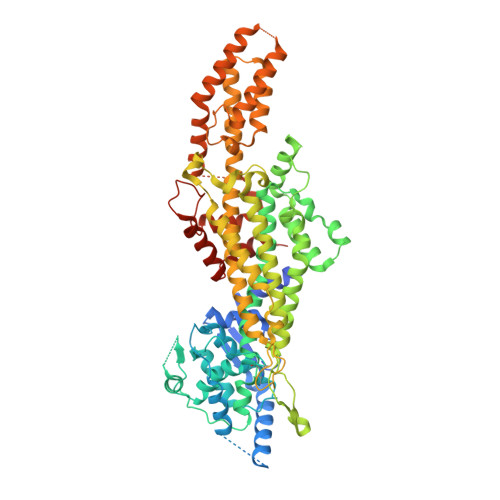Ironing out their differences: dissecting the structural determinants of a phenylalanine aminomutase and ammonia lyase.
Heberling, M.M., Masman, M.F., Bartsch, S., Wybenga, G.G., Dijkstra, B.W., Marrink, S.J., Janssen, D.B.(2015) ACS Chem Biol 10: 989-997
- PubMed: 25494407
- DOI: https://doi.org/10.1021/cb500794h
- Primary Citation of Related Structures:
4V2Q, 4V2R - PubMed Abstract:
Deciphering the structural features that functionally separate ammonia lyases from aminomutases is of interest because it may allow for the engineering of more efficient aminomutases for the synthesis of unnatural amino acids (e.g., β-amino acids). However, this has proved to be a major challenge that involves understanding the factors that influence their activity and regioselectivity differences. Herein, we report evidence of a structural determinant that dictates the activity differences between a phenylalanine ammonia lyase (PAL) and aminomutase (PAM). An inner loop region that closes the active sites of both PAM and PAL was mutated within PAM (PAM residues 77-97) in a stepwise approach to study the effects when the equivalent residue(s) found in the PAL loop were introduced into the PAM loop. Almost all of the single loop mutations triggered a lyase phenotype in PAM. Experimental and computational evidence suggest that the induced lyase features result from inner loop mobility enhancements, which are possibly caused by a 310-helix cluster, flanking α-helices, and hydrophobic interactions. These findings pinpoint the inner loop as a structural determinant of the lyase and mutase activities of PAM.
Organizational Affiliation:
†Department of Biochemistry, Groningen Biomolecular Sciences and Biotechnology Institute, University of Groningen, Nijenborgh 4, 9747 AG, Groningen, The Netherlands.















